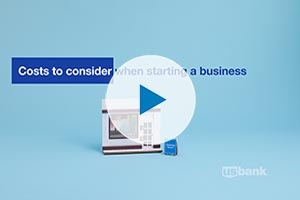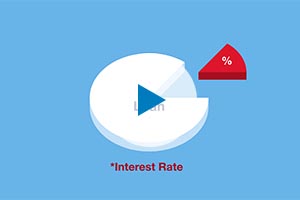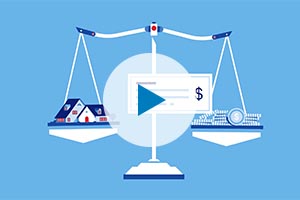Borrowing against assets instead of using cash flow could infuse your organization with the capital it needs to grow, or meet ongoing capital needs.
Need capital without relying on the cash flow of your organization? Asset-based lending (ABL), which has seen a rise in popularity and status over the past decade, could be the solution.
No longer considered “the loan of last resort,” an asset-based loan might be a key element to fund your expansion.
“Most commercial loans leverage cash flow, so they’re focused primarily on borrower performance in terms of how they structure their loans,” says Samuel Philbrick, president of Asset Based Finance at U.S. Bank.
“Conversely, on the ABL side, we’re looking at the company’s balance sheet, the assets that it owns and what those assets generate in terms of their collateral value. This value, which is often referred to as a borrowing base, is the basis for a borrower’s debt capacity under an ABL financing structure.”
Cash-flow lending versus ABL
In traditional cash-flow-based lending, borrower performance is king. The amount of money you can get for a commercial loan is usually dependent upon earnings before interest, taxes, depreciation and amortization (EBITDA). Basically, the more cash your business generates, the more money you can borrow.
ABL, on the other hand, considers assets. Lenders typically advance funds based on a percentage of secured asset value — 70 percent to 90 percent of eligible receivables, for instance, and 50 percent of finished inventory.
Organizations with thin or volatile EBITDA margins can turn to asset-based loans to fuel growth or improve cash flow.
In exchange for the willingness of a bank to loan on assets, ABL borrowers typically have more frequent reporting requirements than with a traditional commercial loan. Interest rates in today’s market are very comparable between the ABL and a traditional commercial loan. This reflects the value that the lender places on the fully secured nature of the ABL.
The difference a recession makes
Despite the obvious appeal of predictable debt capacity and financial flexibility, ABL wasn’t always so inviting, according to Philbrick. “Back in the day, an asset-based loan was looked at as a lender solution, not a borrower solution,” he says. “It was a loan a company would take because it couldn’t get any other kind of loan.”
Attitudes toward ABL changed during the 2008 financial crisis and subsequent recession. As requirements for conventional commercial loans tightened, borrowers needed alternative ways to finance growth and sustain operations. Banks responded with ABL products, offering newer and more favorable terms, such as fewer financial covenants. ABL has been increasing in popularity ever since.
To determine whether it can benefit from ABL, your organization should ask itself two primary questions, Philbrick says:
1. Does leveraging your assets provide greater borrowing capacity than leveraging your cash flow?
If your organization invests heavily in physical materials or merchandise, it might be a good candidate for an asset-based loan. Even if your organization has strong liquidity, when leveraging your asset values outstrips leveraging your cash flow, ABL can improve your borrowing position.
“Say a company’s EBITDA is $10 million,” Philbrick says. “The typical lender will lend three times that. But if that same company has lendable working-capital assets that generate a borrowing base of $40 million, then all of a sudden an asset-based loan will be more attractive based simply on debt capacity.”
Industries well positioned to exploit ABL opportunities can include retailers, distribution companies, grocery stores and manufacturers, as well as commodities-based companies like lumber, metals and mining, or oil and gas. “A key consideration is the strength and volatility of a company’s operating margins,” Philbrick says.
2. Do you need financial flexibility?
Organizations experiencing periodic market volatility and variability are good candidates for ABL, because they may need greater financial flexibility.
“Companies that borrow on a cash-flow basis typically have several, if not many, financial covenants requiring them to perform at a certain level,” Philbrick says.
For instance, conventional financing typically requires that borrowers maintain a minimum level of operating performance to retain a revolving line of credit. Lenders that provide ABL typically focus on borrower liquidity, which allows them to provide far greater financial flexibility.
Retailers and commodities-based companies are ideal examples. The former experience large seasonal shifts in income, while the latter is often subject to economic upswings and downturns that dramatically affect earnings.
Asset-based outcomes
Often, asset-based lending can come through in times of opportunity, Philbrick tells of a client, a family-owned distributor of electronic components. They had a “once-in-a-lifetime opportunity” to buy a large division from a multinational that was exiting the U.S. market. Philbrick says the company used ABL to leverage not only its own working capital, but also the debt capacity of the assets it was buying.
“All of a sudden, they were able to afford this very large acquisition,” Philbrick says. “Long story short, they’ve turned into an incredibly successful company.”
Asset-based lending has become more popular than ever. Contact U.S. Bank to learn more about whether ABL is the right financing option for your organization.





























































































